What stands out about The Nobility — and is likely a secret to their longevity — is their committed aesthetic. This year’s Ashford Castle, their first release since 2011’s The Secret of Blennerhasset Island, is a wonderful long-player that’s at times dreamy rock, shimmery disco(!?), and lovely vocal pop. Their aesthetic — a sort of timeless guitar pop that calls to mind their “North Stars” of the Beatles, Kinks, and Costello without sounding retro — is as evident in the care they put into their first press kits for the record as well as the packaging itself. That’s no mere hyperbole. The packaging (designed by singer/guitarist Sean Williams) was recognized by the Nashville Chapter of American Advertising Foundation. “As I understand it, the previous year’s winner was Taylor Swift’s 1989 album,” multi-instrumentalist Stephen Jerkins tells me.
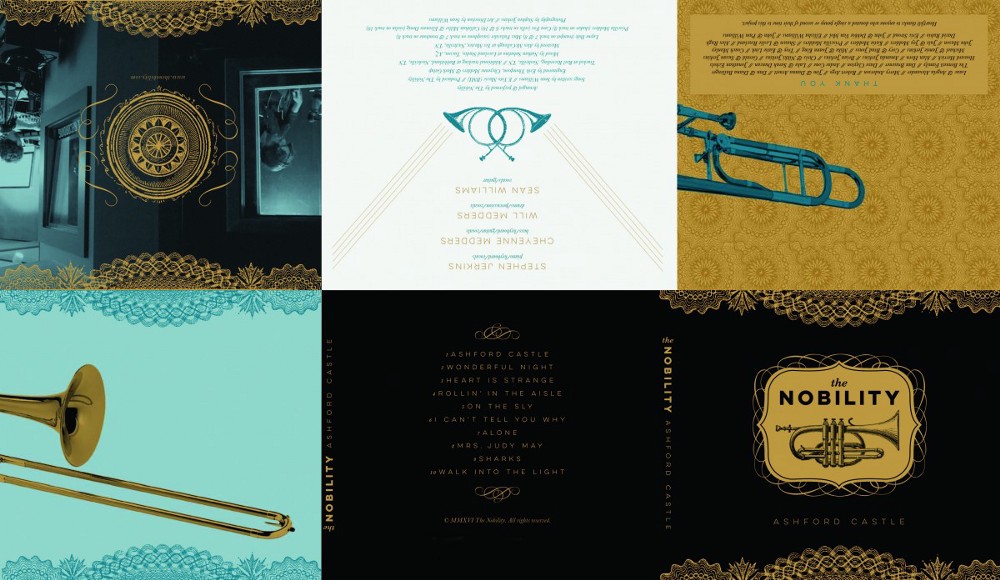
I sat down with multi-instrumentalist Stephen and Sean to talk about the process of making a record, the perils and pleasures of Kickstarter, and how to get people to notice your work.
Blennerhasset Island, Ashford Castle…where do the songs about aristocratic dwellings come from?
SEAN: I guess if I read about something and it’s interesting to me I’ll try to fit it in a song. Blennerhasset Island is this little tourist place near where I grew up on the Ohio River. I went there as a little kid. You had to take a ferry out to this island. “The Secret of Blennerhasset Island” acknowledged my childhood but also sounded like a Hardy Boys mystery and so that was a title I really liked.
“Ashford Castle” is a song that was on our album. I was reading about this castle that kings and queens used to stay at and used to be this legit castle. Then through the years, changes happen, things happen. And eventually it became just a regular hotel that you can pay money and go stay at. That was just kinda an interesting story to me. Maybe there are some parallels to life in there.
How does the writing work? Does Sean come in with a batch of songs and the band arranges them?
SEAN: I’ll do some home recording of songs and it’ll be obviously the melody and lyrics. Sometimes, I’ll throw in an idea for some other thing I’d like to see happening or maybe a harmony. But they’re pretty raw. Then yeah, we just start rehearsing it and at that point it becomes four people contributing ideas to fleshing out the song.
STEPHEN: Also, there are times when Sean brings in a song that we do verbatim. Sometimes, it doesn’t need arranging because he’s already fleshed it out. But then there are other songs that do end up very different than what he brings in.
SEAN: For this particular album, one of our band members — Cheyenne Medders — he brought a lot to the engineering table. Also he is a legit musician which is different from me. So he contributed a lot in terms of arranging our vocals and stuff. I might bring in a song and say, “a three part harmony needs to go here.” But the one I’m singing on the actual demo tape sounds off or doesn’t quite sound right. So Cheyenne helped a lot on that.
He knows the number system, you know. I just sing notes until it sounds right.
We always have a budget going into our studio time and we always blow that out of the water within a week
It’s always interesting to find that space between how much you planned when you went into the studio versus playing around in the studio to find that perfect sound.
SEAN: Oh, there’s a lot of playing around in the studio. And Cheyenne has some recording equipment at his house. So we did some experimenting before we went in the actual studio. I would be embarrassed if some of the things we recorded got out but we eliminated some bad ideas that way. Sometimes we get in the studio and we try a few things out until we’re all kinda like, “Yeah, that’s it. That’s what we’re going for.”
I’ll say this. We always have a budget going into our studio time and we always blow that out of the water within a week because we are not good at saying, “ok, that’ll work.” We keep going and keep going until we’re satisfied. We’ve paid for that. But everything we’ve recorded in the last ten years, I’ve been very satisfied with. We’ve paid for peace of mind.
Once you get in the studio do you have a fairly traditional recording process where the full-band tracks and then you do overdubs? Do you record to a click?
SEAN: Yes. We do a click track on most songs. There’s some songs where we need to let it ebb and flow a little bit. Yeah, we typically play the songs live and keep as much of that as we possibly can. For Ashford Castle, we recorded to a half-inch reel-to-reel 8-track which was new for us. We had recorded on Brian Carter’s 16-track two-inch before. We recorded drums, bass, and electric guitar…and I can’t remember if we did any keyboards on that first pass… those might have been 100% overdubs. We do try to get the vibe and sort of the feel of the song all in that one take and then overdub from there.
Did you choose Reel Recording because you wanted that half-inch tape?
SEAN: We had done three records with Brian Carter and have loved those experiences. We just wanted to try something new and some people had recommended them to us. We went and met with them right after our Kickstarter was successful and I was just struck by how professional they were. They were sort of pitching us on recording there. It’s not like we had a ton of money to give them. They just seemed really excited about recording it. So we went with them. I thought it was a really great experience. What did you think?
STEPHEN: Yeah, another element of that is we just wanted to change it up — I guess you mentioned that — from Brian Carter just to see if something new and different-sounding could happen. I do think it is a little bit different. To a well-trained ear, you’ll notice differences in this recording and the other recordings.
When do you bring in the professionals in the making of a record?
SEAN: When I said “professionals” a second ago, I was just talking about their mentality. In terms of how it sounds, we never want it to sound too professional. In fact, there was a discussion in the studio…I was going to be recording acoustic guitar on something and there were all these old ratty guitars and I was like, “I gotta use on of those.” So we kept trying those and the sound wasn’t quite right. The guy who owns the studio handed me this slick-looking guitar. It looked like something Toby Keith might play. I was like, “No way.” We played it and it ended up sounding really good. Afterwards, he said, “Listen, I don’t have a slick-sounding guitar.” He kinda pointed at me and said that.
STEPHEN: Well, we told him to trash the sound. Cause it was slick. It did sound slick. But we wanted him to screw it up through the microphones and the mixing process.
SEAN: All that to say, professional sound, yes. But not too professional. We’re not interested in sounding like Maroon 5 or anything. But yeah, bringing guys like that who know what they’re doing, who know how to operate a tape machine. I have not invested the time to know how to do that. We had listened to enough things that had been recorded there that we just put our trust in them. We wouldn’t record just anywhere.
Brian Carter’s a guy who’s earned our trust. Reel Recording is. You’re parting ways with a lot of time and a lot of money to make a record. So you have to be pretty sure you’re going to like it and want to listen to it years down the road.
How did the record end up in Arizona for mixing?
SEAN: Since we did have some money to work with through the Kickstarter this time, we decided to put some feelers out to mixing engineers who had mixed records we liked. We wanted to throw a number out at them and say, “Here’s our budget for this. Would you be willing to do it?”
I sort of expected to get a bunch of “no”s back but we put out an email to this guy named Nathan Sabatino who had done some stuff for Flaming Lips, some for Dr. Dog, and we put another to a guy who had worked with Ben Kweller some and another guy who had mixed this band called Ages and Ages which we really liked. All of them seemed sort of willing to work with the budget — some people asked us to come up a little bit — but Nathan was the guy who jumped on it immediately and seemed to like the music immediately. He was very easy to work with. So we chose him.
Was there any back-and-forth there or were you pretty pleased with every mix he did?
SEAN: I was at the point in the record-making process where I was sad at how things were sounding. I was like, “This has been a waste of our time. What am I doing with my life?” And we sent it off to him for the first pass. When it came back, that mood immediately turned around.
We did a couple more rounds of tweaks just to nitpick a few things. If that first pass had been the album, I would have been okay. As we listened through to it, we tweaked a few things. But I would say he got it 80% there on the very first pass.
He wanted to have a phone interview before he started mixing. So he and I talked for maybe — I don’t know — twenty minutes. He just was asking me: what kind of sounds we like, what we’re going for. I described to him some of the stuff we liked of his. He used that as a catalyst to start the project.
When he asked you those questions about what you wanted it to sound like, did you already have those things in mind when you started the recording process?
SEAN: A little bit. The Nobility has a few…North Stars, if you will, in terms of how we sound. We really love the album Ram [Paul McCartney] . We really love the album This Year’s Model [Elvis Costello]. We really love Village Green Preservation Society [Kinks]. Those are sort of how we steer ourselves.
I talked to [Nathan] about really liking those records and he said, “Is there anything newer that you like?” So, I had to come up with some stuff. I mentioned the Ages and Ages record when he asked that question. But I don’t — maybe everyone else is like this — I kinda know how the song should go. You know, melody-wise, and maybe even arrangement-wise. In terms of specific sounds, I’m more: when I hear it, I know it and I can say yes or no. I can’t say, “Take the drums up to 7dBs.” That’s not how my brain works.
STEPHEN: This time around, we wanted somebody who had not been listening to the album from the moment we started tracking. We wanted a fresh pair of ears and a completely different set of opinions. So that’s why, for the first time ever, we had somebody mix it who was not part of any of the other recording process.
What led you to that decision? What made you think we need somebody from outside to mix it?
STEPHEN: Because we had the money to do it. And then also, just to change things up a little. Because usually, Brian Carter has mixed all the albums that he’s recorded. Nathan was less partial to certain things than Brian would have been because [Brian] had listened to every song hundreds of times already and kinda gotten married to certain sounds maybe. Nathan was not married to anything. He just started from scratch.
This thing that you’re creating didn’t exist before. You’re creating something that’s brand new.
Sean, you said you’d reached the point of sadness where you were very unhappy with the record. Is that a typical feeling that comes around the end of a record? Is that something you can identify?
SEAN: Yeah. It is. Just ’cause in the castingvision process, everything’s perfect. When the reality comes in, you’re like, “oh, that sounds cheesy” or “my voice sounds bad.” I have a very critical ear of our band which can be a good thing.
And also, we’d rehearsed and rehearsed and rehearsed and spent a ton of time and had spent a lot of money. Making a record is an exhausting process. You’re at that point of exhaustion and when it’s not as perfect as you want it to be, there is a tinge of sadness that I’ve probably fought through on every record.
There’s another thing too when you talk about casting vision versus what it ends up being. This thing that you’re creating didn’t exist before. You’re creating something that’s brand new. So however it sounds, if you’ve put the work in, you’ve tried as hard as you can, and you’ve exhausted options, then that’s what it sounds like. And that’s probably what it’s supposed to sound like. Even if that wasn’t the initial intent. Maybe it’s close enough. There’s peace in that too.
Let’s talk about your Kickstarter. What advice would you give to other people pursuing that method of financing a record?
STEPHEN: I’d say: definitely talk to somebody who’s done it before. Sean is friends with somebody who has helped coach people through the Kickstarter process…
SEAN: He had just done several successful Kickstarters and so I just grilled him. One of the first things he told me was “Your video needs to be good. People need to want to watch it.”
I have joked that the process of making our Kickstarter video was almost as arduous as making the album itself. Cause we spent a lot of time doing that. There were storyboards involved. There was begging camera operators to do it for very cheap and coordinating people’s schedules and reshooting things that didn’t look right the first time.
At the end of the day, it’s not like we did it super-professionally or anything but a lot went into that video and a lot went into launching the Kickstarter, doing a lot of lead up.
We were given the advice to do a soft launch of the Kickstarter before it officially started to the public. Your Kickstarter is up and ready to go but you get your close circle of friends donating because people are more likely to donate to a Kickstarter that looks like it’s going to be successful. We did that. We buried our pride and bugged people on social media for three straight weeks.
How did you choose the goals and rewards?
SEAN: A lot of it was Stephen and I emailing back and forth ideas that made us laugh. One of the funniest ones on there was Stephen’s idea of performing a scene from Three Men and Baby in someone’s living room.
STEPHEN: I think that was your idea.
SEAN: Oh, was that my idea? I don’t know. It was a good idea whose-ever it was. That’s one of the ones we haven’t fulfilled yet.
But you do have to fulfill it?
SEAN: I want to. Someone specifically paid enough for that. But you know, a lot of them are silly and were just fodder for our video but a lot of them are just your standard stuff like, you get a free copy of the album. Some advice was given to us to have something that’s really low dollar amount where people who want to give can just give it and the prize doesn’t really matter. So I think we promised a digital smile to people which uh…
STEPHEN: That’s another one we haven’t delivered. It’s the cheapest one and yet we have not.
SEAN: We probably just need to take pictures of ourselves smiling and text it to people.
Did some of those sillier rewards get people laughing and interested in the Kickstarter?
SEAN: We thought that those would cause people to share it on social media or email, “Hey, look at what these idiots just did” or whatever.
This has been a huge chunk of our lives. Once we got the money there were still some songs that we needed to figure out. So we spent two or three months preparing those and then we went in the studio.
STEPHEN: And also syncing calendars in this band is like expert level sudoku. It’s very hard to figure out what days everybody’s available and nail down recording. It took a really long time. And rehearsals too, are the same. It’s very difficult.
Did it allow you to do the recording in a way you wouldn’t have done without the Kickstarter funding?
SEAN: We would have had zero money. This would have been coming completely out of our own pockets. That may have knocked it down to an EP or something. So the fact that we did this Kickstarter bought us studio time, made Nathan Sabatino possible. If we didn’t have money from our friends, family, and fans, I don’t know what this would have sounded like.
Would you do it again?
SEAN: It’s kind of like asking someone who just ran a marathon if they would run a marathon again. Uh, maybe? We’re sort of in the middle of this process right now, trying to get people to listen to this album. So starting another Kickstarter seems daunting.
I would be interested in doing another Kickstarter for like…we’re doing a seven-inch vinyl single. I would be interested in doing a lower dollar amount. Like, let’s put out another single and make it less money. Because we raised over $10,000 which is a lot of money for us. We were sweating it out the last few days.
STEPHEN: Yeah, I’d be open to it. One thing we learned from this is that we know a lot of nice people. Way nicer than me. I had not given to a Kickstarter campaign before launching my own Kickstarter campaign. Now, if you send me a link to Kickstarter and I know you, I’m going to donate. Because I now know how humbling it is to have to ask for money and how terrible it feels to not get it. So we both have a lot of humbling experiences with people we haven’t seen in years and years contributing fifty bucks or a hundred bucks.
SEAN: I would like to point out that I will not guarantee a contribution to any Kickstarter emailed to me. I will take it on a case-by-case basis. Thank you.
How did you coordinate publicity for the release of the record?
SEAN: This is the hardest part for us. I have a full-time job. The other guys have obligations too. The thought process behind that is start small and work your way out. In thinking that, we started with two local outlets: the Scene and Lightning 100. I made these overly elaborate press kits…
STEPHEN: They’re pretty amazing.
SEAN: They came with a poster and a t-shirt and a triangle so you could play the triangle along with the album. It was all this goofy stuff saying, “We’re going to enhance your Nobility listening experience. Here’s the shirt you wear. Here’s the poster you look at. Here’s the triangle you play. Here’s the snack that you eat while you enjoy this.” That is for the sole purpose of breaking through the hundreds of manilla envelopes that show up at Lightning 100 or the Scene. Then we’ve kind of identified a few blogs that are outside of that. We’re sending stuff to them, following up with them. And then it will just spread out from there.
We know what to do. It’s finding the time to do it that’s the huge challenge.
Do you think it’s important to coordinate all those efforts around a release date or can an indie band do that long-tail marketing?
STEPHEN: One thing I wish we had done…Prior to the release of the album, I was trying to book dates and you know it’s hundreds of emails or texts or phone calls and we got a handful of shows. Now we’re onto the phase of drumming up reviews. I wish I’d done it the other way where we get the reviews first. Because now it’s not a “new release” even though it’s only three weeks old. Maybe a lot of blogs aren’t interested because it’s not brand-spanking new. I don’t know.
SEAN: If we could do one thing, I wish we could hire an office manager. When I’m at work, I can’t send out all these emails.
It all comes down to time, right?
SEAN: We know what to do. It’s finding the time to do it that’s the huge challenge. Kind of like I was saying, you have a vision of what the album should sound like and you get to where it is and you’re like, “oh, this is what it sounds like.” With our promotion, we’re like, ideally it would have been like this but this is what we have to work with so we’re going to make this good. We have some ideas of things that are going to be happening later. But I hope that people who get this album aren’t too tied to the date it comes out. Hopefully, they’re like, “I’ve never heard this before. It’s new to me.” I remember we got a review from NPR once and it happened like a year after our album came out.
Going back to the time thing…we have reached out to some blogs but you become just one of a million emails. If we had the time and the budget, I would love to pinpoint writers and send them something tangible in the mail that they can look at and open up and go, “oh, this band knows who I am and they thought about this.”
STEPHEN: I think you do stand out now sending physical stuff because everybody just sends links now. We haven’t figured out the magic bullet for getting people’s attention.
















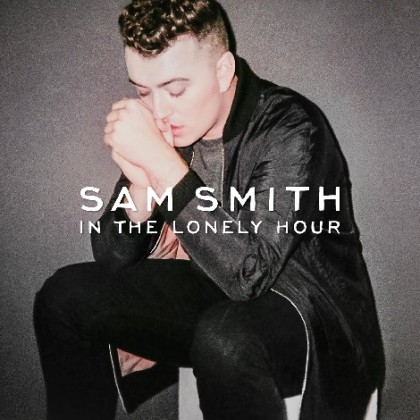







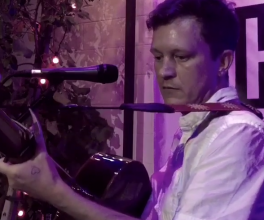
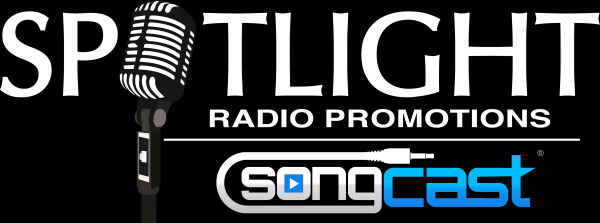
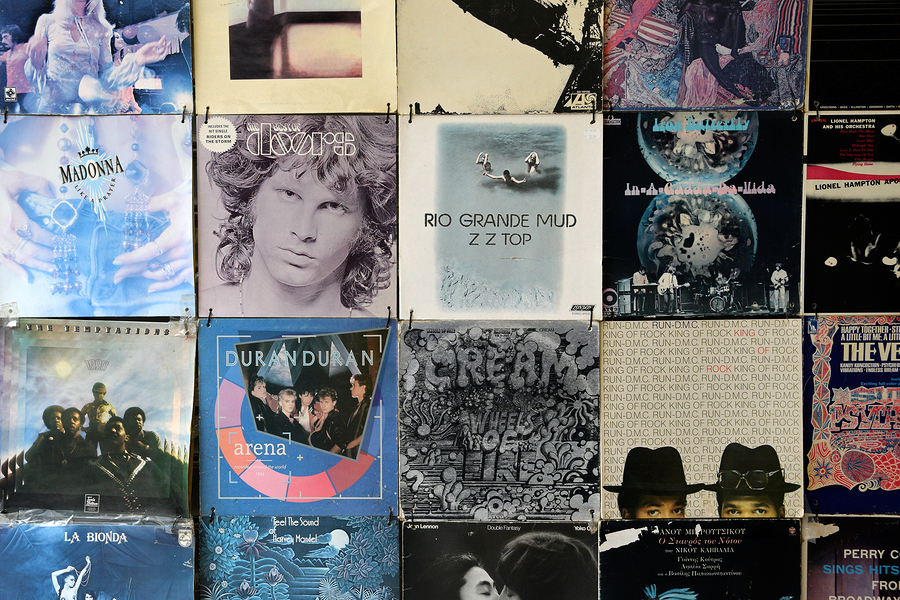











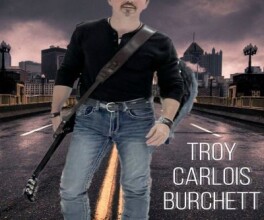
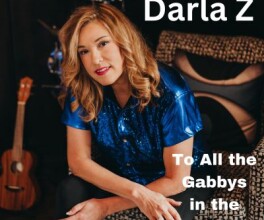




Comments
No comment